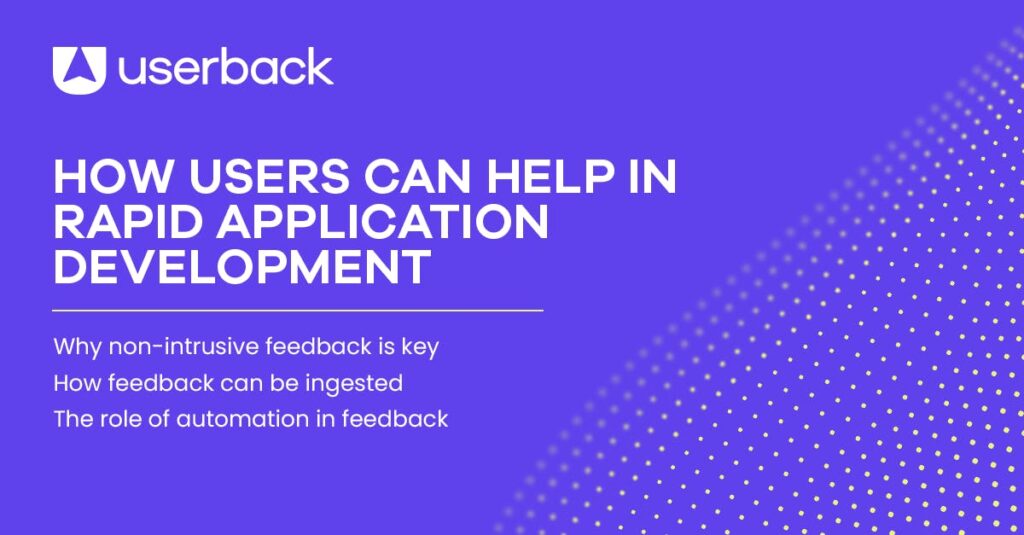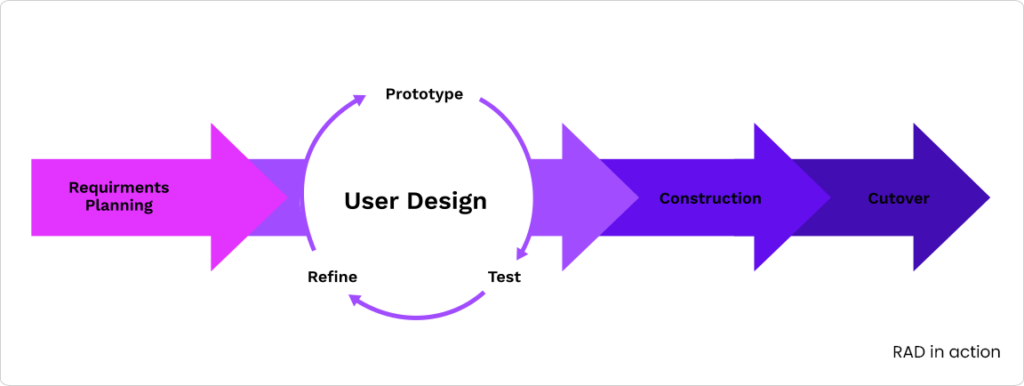Rapid application development is all about speed and agility. In order to create a successful rapid application development strategy, you need to be able to move quickly and make changes on the fly. This can be difficult if you are working alone, but it becomes much easier if you have help from your users. Like in our earlier post on Waterfall development, in this blog post we’ll discuss how your users can help in Rapid Application development, and how you can work with them to create a successful strategy.
What is Rapid Application Development (aka RAD)?
Rapid application development is a software development methodology that focuses on speed and agility. The goal of rapid application development is to create a working prototype of the software as quickly as possible, so that it can be user tested and iterated upon and in a world where time is money, Rapid Application Development (RAD) has become the development model of choice. This approach prioritizes rapid prototyping and quick feedback over long drawn-out cycles that can cost more in terms of both financial and manpower resources with less return on investment for companies who use them as their primary method.
This approach is often used in situations where the requirements of the project are not well understood, or are subject to change. Rapid application development allows for more user feedback and input during the development process, which can help to create a better final product. If you’d like to go deeper on RAD, check out this post over at Codersera.
Working with users during rapid application development can be extremely beneficial. Users can provide valuable feedback about the direction of the project, and they can also help to test prototypes and new features. In order to get the most out of user involvement, it is important to involve them early and often in the development process. User feedback should be used to help make decisions about the direction of the project, and user feedback should be used to improve the quality of the final product.
Attaching Feedback to Rapid Development
The nature of RAD development and the speed in which it aims to design, code, and iterate presents a challenge in collecting feedback in a timely manner. Software teams should consider the time investment when looking at traditional old-school methods of user feedback collection. User groups can take weeks to arrange even a small group of users to gather and provide feedback, and often hands-on testing can prove tricky in larger groups. Email and email survey takes weeks to plan build and delivery and almost always garners a very low response rate, which very well may not be wholly representative of your actual user base, focusing additional emails and time to be invested in chasing additional survey completions. To add to the survey problem, users may not want to be disturbed in this way, injecting your brand into their busy daily routines to ask for survey questions to be completed can damage a brands reputation.
Instead, teams utilizing the RAD development methodology need to look towards feedback collection techniques that match the desired speed of design, code, and iteration. The adoption of a user feedback platform, directly attached to the application or web site allows users to submit feedback directly at the time of interaction for instant feedback where Product Manager or lead Developers can sort and assign via intuitive feedback portals, or harness automation to push feedback to their preferred information points such as feedback>Slack for approval, then Slack>Jira for action.
Ultimately, there’s three things to consider without going too deep into specifics for any software team, Product Manager, Developer or web designer to consider when thinking about applying user feedback to the RAD model.
- Collect feedback at the time of interaction in a non-intrusive way. This approach will allow for more feedback to be collected in a shorter period of time. When feedback is easy to give users will be more inclined to give it – be that bug reporting or feature recommendations.
- Ensure the feedback can be ingested clearly without the need for back and forth clarification that will slow the feedback ingestion and ultimately slow the development cycle. Modern tools should be able to allow users to capture feedback visually – think screenshots with annotations, video sessions and even full session replays to avoid miscommunication and unresolved feedback tickets.
- Put the feedback where it needs to be by leveraging automation. Feedback collection was hard the traditional way, it created siloed pieces of information that took a lot of effort to decode and pass off to Developers. Any platform today should have the ability to take the heavy lift out of collating, vetting, prioritizing and distributing user feedback.
By prioritizing these three elements when considering how to roll out your user feedback platform in support of a RAD methodology you’ll be well positioned to speed development cycles (reducing operational overheads and speeding time to market), improve market fit by actioning the right feedback (better market fit enables faster growth and higher revenue), and introduce less friction between Developer and Product Manager teams and end users. It’s a win-win-win scenario for business, software teams and users.
To sum it all up, user involvement is an important piece to the puzzle. Done right it can make rapid application development more successful and drive significant revenue for business, but it is only one piece of the puzzle. In order to create a successful rapid application development strategy that really works, you need to have a clear vision for the project, and you need to be able to execute on that vision quickly. If you can do these things, user involvement will only help to make your project more successful.
Ready to get started collecting and automating visual feedback? 20,000 software teams are already integrating user feedback into their development process with Userback’s user feedback platform. and find out just how easy it is.


